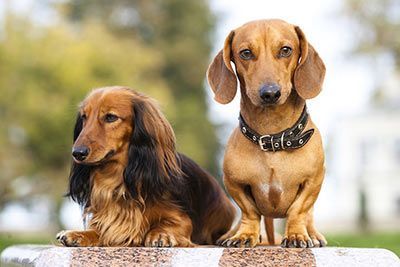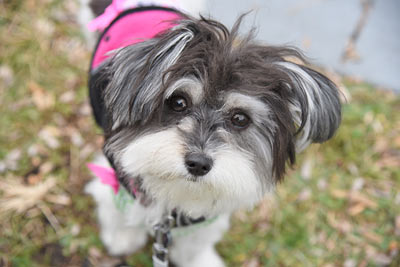Dalmatian
Dalmatian Dog Breed Information
| Size | 21-24 inches (54-62 cm) |
| Weight | 53-70 lbs (24-32 kg) |
| Origin | Croatia |
| Color | White with black/brown spots |
| Lifespan | 12-14 years |
| Suitable As | Family dog, companion dog |
| Personality | Energetic, active, friendly, lively, funny, easy to train |
| Exercise | |
| Drooling | |
| Shedding | |
| Grooming |

Breed Characteristics
Dalmatians are extremely friendly, happy and enthusiastic and therefore popular family dogs. They are not suitable for beginners and especially not for slow-paced people. Its need for exercise is way underestimated in particular. They are reserved with new people and can be a little defensive with new dogs. But they get on well with other pets and especially with horses.
Discipline and Training
The Dalmatian is a dog that learns quickly, but you must never use harsh training. It is terribly sensitive and does not forget if he has been treated badly.The best way to train a Dalmatian is with praise and a lot of love. But don’t overindulge them either. A Dalmatian will quickly try to take “the throne” if it notices that its master isn’t being a strong leader. Being firm and clear are very important when training this dog.

Exercise
Can you imagine hiking, jogging, skating, swimming or cycling for two (!) hours a day after you come home from school or work? This dog's energy has no limits. And it's highly intelligent, too. This is why exercise alone is not enough to keep that dog happy. To avoid behaviour problems you should participate with your Dalmatian in agility, flyball or obedience. You have to come up with new challenges regularly. If it feels under-occupied and bored, it has a tendency to become a bit destructive.
Top Activities
Hiking, Biking, Frisbee Fetch, Treasure Hunt, Agility, Obedience

Pros and Cons
Pros
- Polite, with good manners
- Perfect for agility and obedience
- Easy grooming
Cons
- Not a “beginner” dog
- Has lots of energy
- Needs a lot of exercise
- Sheds a lot, all year round
- Tends to bark a lot
Shedding
When it comes to shedding, Dalmatians are often the butt of jokes, like “Dalmatians only shed two times: during the day and at night.” Or “Dalmatians only shed once a year... for 365 days.” Dalmatians may have short coats, but that definitely doesn’t mean that they don’t shed. Regular grooming with a dog brush helps to reduce the amount of fur that ends up on your floor.

Appearance
You can tell if a dog is a Dalmatian at first glance because their coat has a unique appearance. It is white and has black or brown spots everywhere. You might mistake it for a Great Dane with a harlequin coat. The Great Dane is slim and tall, too, but it has floppy flews.
By the way: At birth Dalmatians do not have a spotted coat. When they are born into the world, their coat is completely white. The first spots appear after about two weeks. After a year they have all of their spots, which barely change anymore.

Health and Care
Dalmatians often suffer from congenital deafness due to their genetic predisposition. Its coat is easy to care for.
History and Origin
The origins of the Dalmatians is not yet absolutely clear. Archeologists found pictures of dogs that look similar to today's Dalmatians in pharaohs tombs in Egypt. Maybe they came from India via Egypt to Greece and from there to France and England. But that's just a guess. There is no official evidence. It is believed that the breed has its name from the region „Dalmatia“, a coastal region in Croatia (Europe).
Fun Facts
The Dalmatian is the mascot of the New York Fire Department. In the 19th century it ran in front of horse-drawn fire trucks so as to clear the path for the firefighters.
Comparable Breeds



































